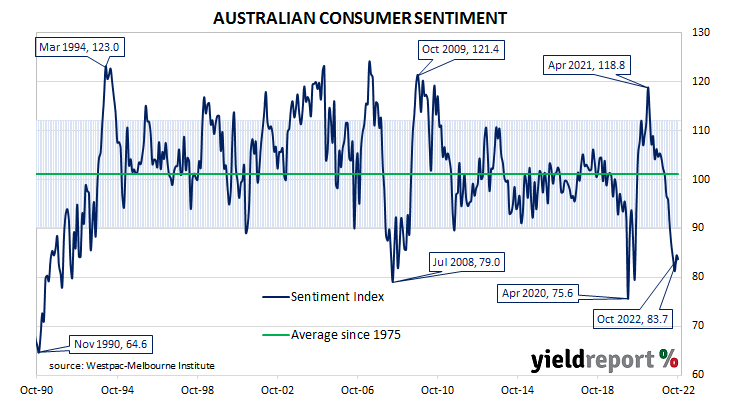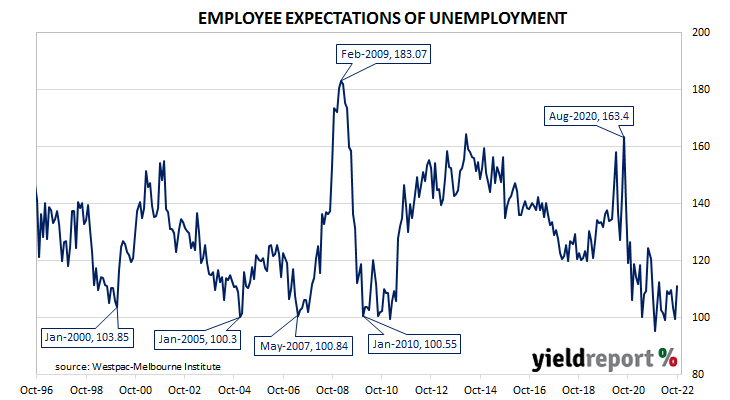Summary: Household sentiment deteriorates in October; “in deeply pessimistic territory”; would have been “significantly worse” had RBA delivered 50bps increase; three of five sub-indices lower; more respondents expecting higher jobless rate.
After a lengthy divergence between measures of consumer sentiment and business confidence in Australia which began in 2014, confidence readings of the two sectors converged again in mid-July 2018. Both measures then deteriorated gradually in trend terms, with consumer confidence leading the way. Household sentiment fell off a cliff in April 2020 but, after a few months of to-ing and fro-ing, it then staged a full recovery. However, consumer sentiment has deteriorated significantly over the past year, while business sentiment has been more robust.
According to the latest Westpac-Melbourne Institute survey conducted in early October, household sentiment has deteriorated after a brief improvement in September. Their Consumer Sentiment Index declined from September’s reading of 84.4 to 83.7, a reading which is well below the “normal” range and significantly lower than the long-term average reading of just over 101.
“The Index remains in deeply pessimistic territory at a level comparable to the lows briefly reached during the pandemic and the extended weakness experienced during the Global Financial Crisis,” said Westpac Chief Economist Bill Evans.
Any reading of the Consumer Sentiment Index below 100 indicates the number of consumers who are pessimistic is greater than the number of consumers who are optimistic.
Commonwealth Government bond yields moved substantially higher on the day. By the close of business, the 3-year ACGB yield had gained 11bps to 3.62%, the 10-year yield had jumped 17bps to 4.06% while the 20-year yield finished 19bps higher at 4.34%.
In the cash futures market, expectations regarding future rate rises hardly changed. At the end of the day, contracts implied the cash rate would rise from the current rate of 2.56% to average 2.795% in November and then increase to an average of 2.975% in December. May 2023 contracts implied a 3.755% average cash rate while August 2023 contracts implied 3.92%.
Evans noted the index would have been “significantly worse” had the Reserve Bank delivered a 50bps increase instead of the 25bps rise announced. Respondents surveyed after the announcement were generally less pessimistic than respondents surveyed prior to the announcement.
Three of the five sub-indices registered lower readings, with the “Economic conditions – next 12 months” sub-index posting the largest monthly percentage loss. Readings of the “Family finances – next 12 months” and “Time to buy a major household item” sub-indices both improved.
The Unemployment Expectations index, formerly a useful guide to RBA rate changes, rose from 99.6 to 111.3. Higher readings result from more respondents expecting a higher unemployment rate in the year ahead.



